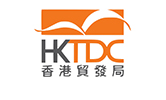Engineering & Research Industry Market Research
Competitive Intelligence, Business Analysis, Forecasts, Market Size, Trends, Companies, Statistics
Available Data Services: Custom Research Projects, Database Subsription or PDF eBooks
PLUNKETT PROVIDES IN-DEPTH STATISTICS TABLES COVERING THE FOLLOWING INDUSTRY TOPICS:
-
Engineering and Research Industry Statistics and Market Size Overview
-
Quarterly Engineering & Research Industry Revenues, U.S.: 2022
-
Engineering & Scientific Research & Development Services: Estimated Sources of Revenue, U.S.: 2017-2021
-
Federal R&D Budget & Distribution by Agency, U.S.: Fiscal Years 2022-2024
-
National R&D Expenditures & R&D as a Percentage of GDP, by Country: Selected Years, 1985-2014
-
Employment in Life & Physical Science Occupations by Business Type, U.S.: May 2022
-
Federal R&D & R&D Plant Funding for Space Flight, Research & Supporting Activities, U.S.: Fiscal Years 2022-2024
-
Federal R&D Funding for National Defense, U.S.: Fiscal Years 2022-2024
-
The U.S. Drug Discovery & Approval Process
-
NASA Budget Appropriations & Projections: 2022-2028
-
Federal R&D & R&D Plant Funding for Health and Human Services, U.S.: Fiscal Years 2020-2022
-
NSF Budget by Appropriation (Dollars in Millions), Fiscal Years 2022-2024
-
Federal R&D & R&D Plant Funding for Energy, U.S.: Fiscal Years 2017-2019
-
U.S. National Nanotechnology Initiative (NNI) Budget: Fiscal Years 2021-2023
-
Federal R&D Funding by Character of Work and Facilities and Equipment, U.S.: Fiscal Years 2022-2024
-
Research Funding for Biological Sciences, U.S. National Science Foundation: Fiscal Years 2021-2023
-
Research Funding for Engineering, U.S. National Science Foundation: Fiscal Years 2022-2024
-
U.S. Department of Energy Funding for Science & Energy Programs: 2022-2024
-
Domestic U.S. Biopharmaceutical R&D & R&D Abroad, PhRMA Member Companies: 1985-2019
-
Federal R&D & R&D Plant Funding for Energy, U.S.: Fiscal Years 2022-2024
-
Top 30 U.S. Patent Recipient Organizations: 2022
-
Federal R&D & R&D Plant Funding for Basic Research, U.S.: Fiscal Years 2022-2024
-
Top Foreign Countries by Number of Residents Receiving U.S. Patents: 2015
-
Employment in Engineering Occupations by Business Type, U.S.: 2019-January 2023
-
Federal R&D & R&D Plant Funding for Transportation, U.S.: Fiscal Years 2021-2023
-
Federal R&D & R&D Plant Funding for Agriculture, U.S.: Fiscal Years 2021-2023
-
Federal R&D & R&D Plant Funding for Energy, U.S.: Fiscal Years 2019-2021
-
Federal R&D & R&D Plant Funding for Natural Resources & Environment, U.S.: Fiscal Years 2015-2017
-
Major Patenting U.S. Universities: 2016
Top Companies Profiled
The following is a partial listing for this industry. As a subscriber, you will have access to the leading companies and top growth companies. This includes publicly-held, private, subsidiary and joint venture companies, on a global basis as well as in the U.S.
Hundreds of Top Companies Profiled, Including:
PLUNKETT PROVIDES UNIQUE ANALYSIS OF THE FOLLOWING TRENDS THAT ARE DRIVING THIS INDUSTRY:
-
Introduction to the Engineering & Research Industry
-
A Short History of U.S. Industrial Research & Development
-
R&D Expands in Chinese Research Parks/Patent Filings Soar
-
The Coronavirus’ Effect on the Engineering & Research Industry
-
Outsourcing and Offshoring of Research, Development and Engineering Grow Along with Globalization
-
Original Design Manufacturing (ODM) Adds Value to Contract Electronics Manufacturing
-
The State of the Biotechnology Industry Today
-
From Korea to India to Singapore to China, Nations Compete Fiercely in Biotech Development
-
Government Support for Stem Cell Research Evolves
-
Globalization and Worldwide Collaboration Fuel the Research Efforts of Major Corporations
-
Government and Private Nanotechnology Research Funding Is Substantial
-
Nanotechnology Converges with Biotech
-
Number of Patent Applications Remains High/Patent Laws Change
-
3D Printing (Additive Manufacturing), Rapid Prototyping and Computer Aided Design
-
Industrial Robots and Factory Automation
-
Fuel Cell and Hydrogen Power Research Continues/Fuel Cell Cars Enter the Market
-
Electric Cars and Plug-in Hybrids (PHEVs) Enter the Market in Low Numbers
-
Major Research and Advancements in Lithium Batteries/Tesla and Panasonic Plan Gigafactory
-
The Future: Pervasive Computing and Complete Mobility Will Be Standard
-
Supercomputing Hits 33.86 Petaflops/IBM’s Watson Expands Commercial Applications for Big Data
-
Superconductivity Provides Advanced Electricity Distribution Technology
-
Private, Reusable Rockets Launch Commercial Satellites, Lowering Costs
-
Technology Discussion—Synthetic Biology
-
Massive Funding for Nuclear Fusion Projects
-
Private Space Vehicles Begin to Fly, Including the SpaceShipTwo, but 2014 Crash May Slow Development
-
Global Infrastructure Investment Needs Top $50 Trillion through 2030, Offering Vast Opportunity to Engineers and Developers
-
HPTP Thermoplastics, Thermoset and Engineered Plastics Enable Advanced Products/Nanocomposites Offer the Ultimate in Advanced Materials
-
Artificial Intelligence (AI), Deep Learning and Machine Learning Advance into Commercial Applications, Including Health Care and Robotics
-
Artificial Intelligence (AI) Enables Efficiencies and Accelerated Innovation in R&D
Key Findings:
- Plunkett Research analyzes the top trends changing the industry, and provides in-depth industry statistics. In addition, this publication profiles the top 500 companies in the Engineering & Research industry.
Available Formats:
- Printed Almanac: 978-1-62831-616-2 (Available Now)
- E-book: ISBN 978-1-62831-935-4 (Available Now)
- Plunkett Research Online (Subscribers)
Key Features Include:
- Industry trends analysis, market data and competitive intelligence
- Market forecasts and Industry Statistics
- Industry Associations and Professional Societies List
- In-Depth Profiles of hundreds of leading companies
- Industry Glossary
Pages: 672
Statistical Tables Provided: 21
Companies Profiled: 495
Geographic Focus: Global
Price: $379.99
Key Questions Answered Include:
- How is the industry evolving?
- How is the industry being shaped by new technologies?
- How is demand growing in emerging markets and mature economies?
- What is the size of the market now and in the future?
- What are the financial results of the leading companies?
- What are the names and titles of top executives?
- What are the top companies and what are their revenues?
This feature-rich book covers competitive intelligence, market research and business analysis—everything you need to know about the engineering & research business including:
- Introduction to the Engineering & Research Industry
- A Short History of U.S. Industrial Research & Development
- The Coronavirus’ Effect on the Engineering & Research Industry
- R&D Expands in Chinese Research Parks/Patent Filings Soar
- Outsourcing and Offshoring of Research, Development and Engineering Grow Along With Globalization
- Original Design Manufacturing (ODM) Adds Value to Contract Electronics Manufacturing
- The State of the Biotechnology Industry Today
- From Korea to India to Singapore to China, Nations Compete Fiercely in Biotech
Development
- Globalization and Worldwide Collaboration Fuel the Research Efforts of Major Corporations
- Number of Patent Applications Remains High/Patent Laws Change
- 3D Printing (Additive Manufacturing), Rapid Prototyping and Computer Aided Design
- Industrial Robots and Factory Automation Advance Through Artificial Intelligence (AI)
- Fuel Cell and Hydrogen Power Research Continues/Fuel Cell Cars Enter Market
- Electric Cars and Plug-in Hybrids (PHEVs) to See Massive New Investments by Auto Makers
- Major Research and Advancements in Lithium Batteries/Tesla and Panasonic Operate the Gigafactory
- The Future: Pervasive Computing and Complete Mobility Will Be Standard
- Supercomputing Hits 1,102 Petaflops/IBM’s Watson Expands Commercial Applications for Big Data
- Superconductivity Provides Advanced Electricity Distribution Technology
- Private, Reusable Rockets Launch Commercial Satellites and Serve Both the U.S. Military
& NASA
- Technology Discussion—Synthetic Biology
- The Future of Transportation and Supply Chains: Massive Investments in Infrastructure, Mobility Services and Hyperloop
- HPTP Thermoplastics, Thermoset and Engineered Plastics Enable Advanced Products/Nanocomposites Offer the Ultimate in Advanced Materials
- Artificial Intelligence (AI), Deep Learning and Machine Learning Advance into Commercial Applications, Including Health Care and Robotics
Engineering & Research Industry Statistics
- Engineering & Research Industry Statistics and Market Size Overview
- Quarterly Engineering & Research Industry Revenues, U.S.: 2021
- Engineering & Scientific Research & Development Services: Estimated Sources of Revenue, U.S.: 2016-2020
- Federal R&D Funding by Character of Work and Facilities and Equipment, U.S.: Fiscal Years 2021-2023
- Federal R&D Budget & Distribution by Agency, U.S.: Fiscal Years 2021-2023
- Federal R&D & R&D Plant Funding for National Defense, U.S.: Fiscal Years 2021-2023
- Federal R&D & R&D Plant Funding for Health and Human Services, U.S.: Fiscal Years 2019-2021
- Federal R&D & R&D Plant Funding for Space Flight, Research & Supporting Activities, U.S.: Fiscal Years 2020-2022
- NASA Budget Appropriations & Projections: 2020-2026
- Federal R&D & R&D Plant Funding for Basic Research, U.S.: Fiscal Years 2019-2021
- Federal R&D & R&D Plant Funding for Agriculture, U.S.: Fiscal Years 2019-2021
- Federal R&D & R&D Plant Funding for Transportation, U.S.: Fiscal Years 2019-2021
- Federal R&D & R&D Plant Funding for Energy, U.S.: Fiscal Years 2019-2021
- U.S. Department of Energy Funding for Science & Energy Programs: 2021-2023
- U.S. National Nanotechnology Initiative (NNI) Budget: Fiscal Years 2020-2022
- Research Funding for Biological Sciences, U.S. National Science Foundation: Fiscal Years 2021-2023
- Research Funding for Engineering, U.S. National Science Foundation: Fiscal Years 2021-2023
- Top 30 U.S. Patent Recipient Organizations: 2021
- The U.S. Drug Discovery & Approval Process
- Employment in Engineering Occupations by Business Type, U.S.: 2018-February 2022
- Employment in Life & Physical Science Occupations by Business Type, U.S.: May 2021
Companies Mentioned Include:
- Saudi Aramco (Saudi Arabian Oil Company)
- Apple Inc
- China Petroleum Pipeline Engineering Co Ltd
- China State Construction Engineering Corp (CSCEC)
- Toyota Motor Corporation
- Microsoft Corporation
- China Railway Construction Company Limited (CRCC)
- SAIC Motor Corporation Limited
- Honda Motor Co Ltd
- Mitsubishi Corporation



















